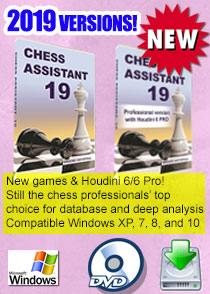Improvement for beginning chess players (Up to 600 Elo)
Improvement Guide Articles
Here are some articles by GM Alexandra Kosteniuk and chess guru Steve Lopez on how best to improve at chess from different levels. You can come back to this main page anytime.Starting out as a brand new chess player can be a very daunting task. There’s so much to remember! At the start it’s hard to recall how the different pieces move, not to mention the various special moves (like castling, en passant captures, and pawn promotions).
At the beginner level it’s important for you to play a lot of chess so that the ways the pieces move become fixed in your mind. But it’s no fun to play a game in which you lose all the time. That’s why we recommend using a chess software program which is designed for beginning players. Dinosaur Chess is a fun, interactive way to learn and practice chess.

Dinosaur Chess is a great program for beginners, especially children. More than twenty interactive games and puzzles help you to learn the basic chess moves, along with additional elementary chess concepts such as piece captures, checkmates, special moves, and the relative values of the pieces. Dinosaur Chess also contains a complete chess playing program which lets you practice what you’ve learned against a simplified computerized opponent.
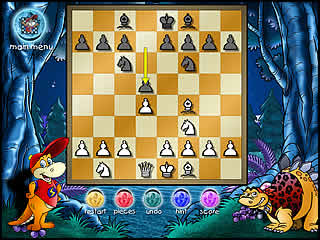
After you understand how the pieces move, it’s time to move on to learning how the chess pieces interact. It’s vital to be able to spot one-move checkmates to your opponent’s King; this basic chess knowledge will help you analyze more complicated multi-move mates later on.
It’s also important to be able to identify the opponent’s unprotected pieces. When you see that the other player has left a piece unguarded, that’s your cue to find a way to pick off that piece and gain a material advantage. But it’s not about just capturing material – many times you’ll find that more than one of your pieces can capture one belonging to your opponent; in these cases, it’s crucial to know the best way to capture that opposing piece in a way that not only wins material but also doesn’t damage your own board position.
Learning how to checkmate the opponent’s King with the major pieces when there are few pieces on the board is a vital early skill you’ll need to master; in addition to helping you “win a won game”, this knowledge also aids you in other phases of the game since you’ll better understand which squares are controlled by your pieces. A popular chess Internet columnist once wrote about how a Master-level friend told him, “Every piece casts a shadow” on the chessboard, meaning that each piece controls squares on the board. Learning elementary mating combinations helps you understand these “shadows”, how your pieces can take squares away from your opponent’s chessmen, and how they can interact to deliver checkmate.
You’ll also need to learn chess notation: how chess moves are written and recorded. This not only lets you record your own games (so you can replay them later to see what you’ve done well and done incorrectly) but it also unlocks a universe of chess games played by others. Literally thousands of chess books and hundreds of thousands of chess magazines have been published, works which contain the games of great players from throughout chess history, as well as from the top players of today. When you learn how to read and record chess notation, you’ll be able to use a plethora of instructional materials, both printed and electronic, to improve your own chess play.
There are a great many resources designed for beginning players which are available for use within the Peshka program. The instructional course Chess: From Beginner to Club Player is especially good:
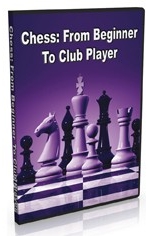
Chess: From Beginner to Club Player contains more than 100 chess topics arranged in an easy-to-follow format. It starts with the very simple concepts which we’ve mentioned in this article, and gradually guides you through more advanced chess ideas. When you’ve mastered the material in this chess course, you’ll be able to easily hold your own on the chessboard against players from beginner to intermediate level; in fact, the more advanced material in this course could even be recommended to higher-leveled intermediate players (rated 1500-1800). This course also contains more than 700 interactive exercises and chess problems to challenge and instruct players from beginners to intermediate club players.
Additionally Chess: From Beginner to Club Player teaches you how to read chess notation, helping you with that major step on the path to a lifetime of chess learning, fun, and enjoyment.
You’ll also want to practice simple checkmates; for this, we recommend Elementary Checkmates I:
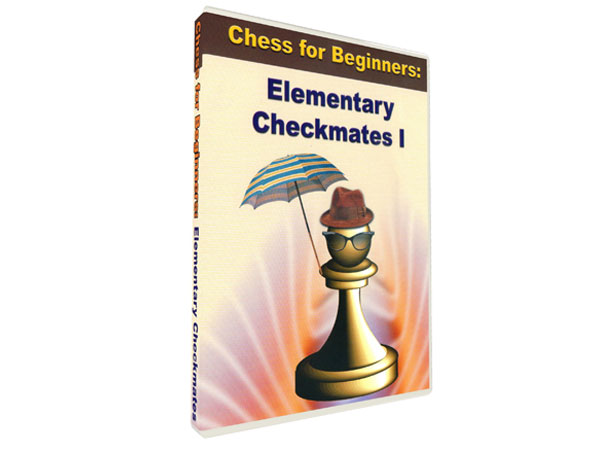
Elementary Checkmates I contains a staggering 40,000 checkmate problems designed for beginning to low intermediate players! It’s a perfect compliment to the Elo-tracking features in Peshka (meantioned in the previous section) as well; each exercise you complete will change your tracked rating in Peshka, making it easy for you to chart your progress. The checkmates are organized by theme (such as positions with few or many pieces on the board) and are further categorized by the mating piece. However, there are also sections in which the mating piece is not identified, and the Peshka program’s “Test” feature can also randomize the puzzles so that you won’t know which piece is the one which delivers the mate.
Another chess course which is ideally suited for beginning players using the Peshka interface is Easy Ways of Taking Pawns and Pieces:

Easy Ways of Taking Pawns and Pieces teaches the fundamentals of obtaining a material advantage by picking off the opponent’s undefended pieces (and also teaches you to not leave your own material “hanging”). The 5,800 exercises in this course are organized by theme, and all of them are taken from actual games. Using Peshka’s tracking features, you can see how you’re progressing as you play through the exercises, and you can easily randomize the order of the chess problems by using the “Test” function in Peshka.
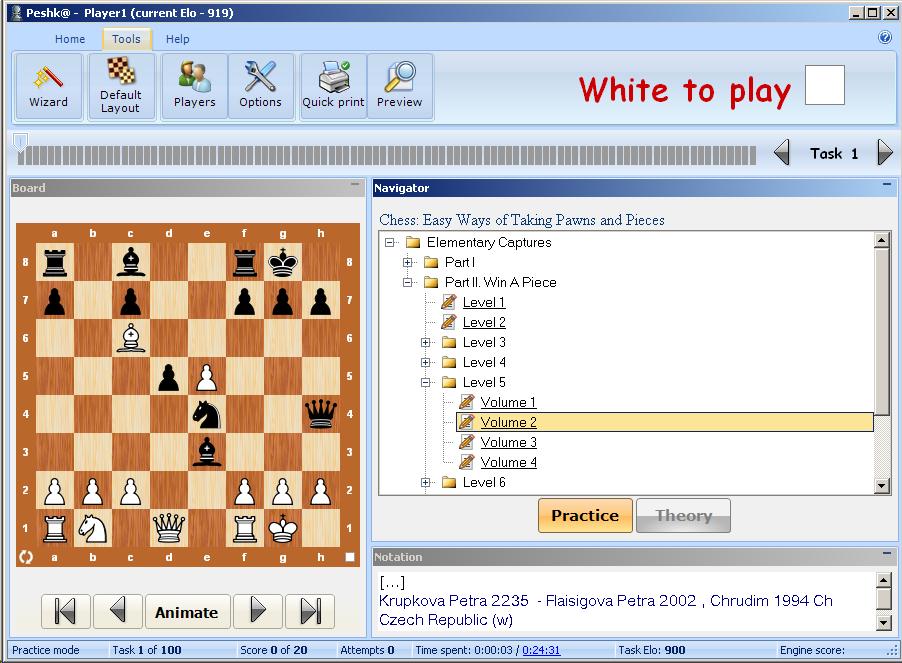
After you’ve mastered these fundamentals, it’s time to take the next step: basic tactics, pawn concepts, and simple chess openings. That’s what we’ll consider in the next stage on your road to chess mastery.






















